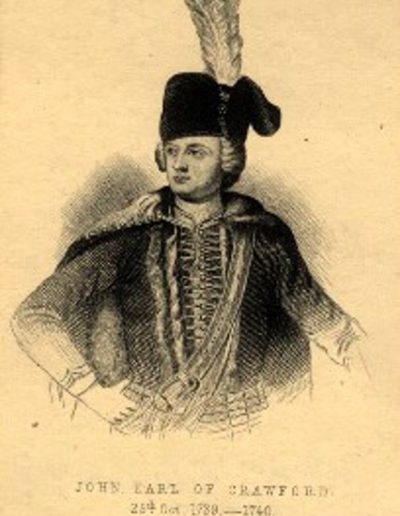
Barony of Auchtermunzie
Location: Moonzie, Fife | Established: 1437

Moonzie is a parish in Fife, around 3 miles north-west of Cupar and 10 miles west of St Andrews. It is a short form of Auchtermunzie which was the name of the area throughout most of history. The earliest references to Auchtermunzie are from the twelfth century. The barony was likely founded in 1437 or shortly after as thanks for the loyalty of Sir David Dunbar of Cockburn, a son of the Earl of March, who during the assassination of King James I defended him and though wounded pursued the attackers as they fled. As a reward the new King James II granted him the lands of Auchtermunzie and Cairnie. The barony would have covered around 1100 acres, a small but rich area of arable land which historically has been known for its abundance of wheat, barley and oats. In 1600 two of the tenants of Moonzie paid more than 20 merks a year, a significant sum. Sir David’s lands passed to his daughter and heiress Margaret who was wife of Alexander Lindsay, 4th Earl of Crawford known as ‘Earl Beardie’ for his great beard and the ‘Tiger Earl’ for his fierce disposition. Auchtermunzie was inherited by their younger son Alexander.
Late in life Alexander succeeded to the lands and titles of his nephew John who died at the Battle of Flodden and so the barons of Auchtermunzie became the Earls of Crawford. The Lindsays of Crawford were prominent nobles for hundreds of years. The son of David, 8th Earl of Crawford was Alexander, an infamous criminal known as the Wicked Master who tried to kill his father and was disinherited. John, 17th Earl of Crawford fought against King Charles during the early part of the Wars of the Three Kingdoms while John, 19th Earl of Crawford was elected a Representative Peer for Scotland in the first post-Union Parliament of Great Britain in 1707. His son John, 20th Earl Crawford was an officer who served in both the Austrian and Russian armies and was severely wounded at the Battle of Krotzka in 1739. He joined the British army fighting at the Battle of Dettingen, during the Jacobite Rising of 1745 and the Battle of Fontenoy. George, 22nd Earl of Crawford died unmarried and Auchtermunzie passed through the female line to the Earls of Glasgow. George, 6th Earl of Glasgow’s eldest daughter Gertrude married Thomas Cochrane in 1880 and the barony of Auchermunzie went to their heirs. Cochrane was an officer during the Boer and First World Wars and a Liberal-Unionist MP for North Ayrshire, serving in Arthur Balfour’s administration. He was later raised to the peerage as Baron Cochrane of Cults and was succeeded by his son Thomas, a barrister and had been an officer in the Black Watch during the First World War. The family retained their ancestral lands as farmers and the baron before the present holder, Ralph Henry Vere, 4th Baron of Cults, 24th Baron of Auchtermunzie, sat in the House of Lords during the 1990s.

![Figure 1- OS Map [1908] National Library of Scotland http-::maps.nls.uk:index.html](https://baronage.scot/wp-content/uploads/2021/07/Figure-1-OS-Map-1908-National-Library-of-Scotland-http-maps.nls_.ukindex.html.jpg)



